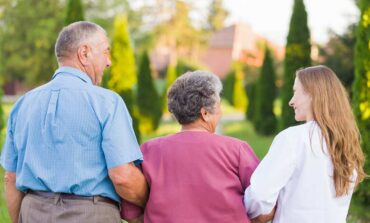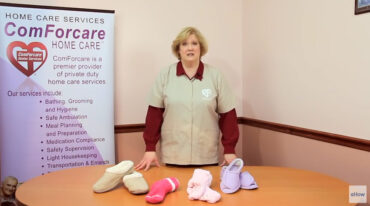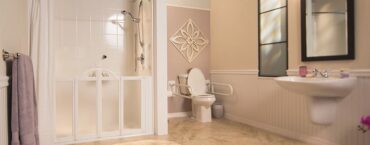Q) What is “Aging in Place?”
Aging in place is the ability to live in one’s own home and community safely, independently, and comfortably, regardless of age, income, or ability level. –CDC
Q) What Elements do I need to achieve aging in place?
1. Your health and physical needs: Do physical or mental limits affect your ability to live at home? Are you able to get your health needs met at home?
2. Informal Care: Do you have family, friends, or organizations like church groups who will provide non-paid care for you? And are these informal caregivers able to provide the care you may require?
3. Money / Finances: This covers not only the money you will need to stay at home for in-home services (Medicare provides limited short term home health care that is specific); but also LTC insurance, which may not pay all your needs. Is a Reverse Mortgage right for you?
4. Built Environment: How well do you get around at home? Do stairs and the lack of a bathroom on the main floor affect your ability to remain home? Can you perform home repairs yourself? Or can you afford to hire it out? Home modifications can be costly and finding CAPS contractors in your area may be challenging.
5. Community Services: What kinds of services are offered in the community? Not all communities offer services for free or at low costs; and some may be covered by Medicaid, while others are not. Are transportation services offered? Or senior centers near by?
Q) What Kinds of Services might help me with Aging in Place?
-Basic Homecare: Someone to make a meal or clean up
-Home Healthcare: In-home non-medical care to provide help with ADLs
-In-home Healthcare: Medical management of wounds/meds/specialized medical care
-Home maintenance: Hiring lawn/handyman fix-ups; Certified Aging in place Specialists
-Transportation: Securing rides to store, church, Dr’s office, social activities, etc.
-Home-delivered meals: Meals-on-wheels
Support Services for Aging in Place
Aging in place (community) takes a variety of support services which are often a challenge to pull-together on your own. Geriatric Case Managers are the professionals who do this kind of work. Employed in public and private settings, they assist older adults in accessing needs and finding services required for aging in place.
Check your local Area Agency on Aging for finding public case managers. Private Geriatric Case Managers can be reached through organizations like The National Association of Professional Geriatric Care Managers. For information on services in your area contact The Administration on Aging’s Eldercare Locator (they have Spanish-speaking staff on duty).
Q) What are the Top 5 Home Modifications?
1. Adapt Main Floor of Home for One Level Living:
Bedroom, bath, kitchen, and laundry; with no-step entry all on the main floor.
2. Widen Doorways to 36 Inches w/Offset Hinges on Doors:
Wheelchairs can be a fact of life for many older adults, who may use them all of the time or just on occasion. Conventional doorways usually are not wide enough to accommodate a wheelchair so widening the doorways is often required. Swing-out door hinges are also easy to install and inexpensive.
3. Install Hand-held Shower-heads and Grab Bars:
Hand-held shower-heads and grab bars are some of the least expensive changes you can make and are a great help to those with balance problems.
4. Use Lever Handles on Doors and Plumbing Fixtures:
Decreases in hand strength are a common problem with aging. The use of a simple lever eliminates the struggle with operating doorknobs and faucets.
5. Use “Comfort Height” Toilets:
Many older adults suffer from osteoporosis or arthritis and find it hard to stand up from a normal height toilet. A higher toilet or toilet chair that fits over the existing toilet helps to eliminate this problem.
As Jon Pynoos, PhD, (USCDavis School of Gerontology) says: The desire for most is to age in place.
I hope this post helps you and your loved ones do just that…All the best, Patrick.
This article has been used with permission.
Source: http://aginginplace.com/four-questions-about-aging-in-place/
Written by: Patrick Roden, RN, PhD
Related items
With What Things Should We Have Outside Help For Eldercare?
THIRD IN A SERIES: EASY ANSWERS TO TOUGH QUESTIONS ABOUT ELDERCARE
You can read the first
Walk-In Shower Designs
Innovative walk-in shower designs empower folks with limited mobility to retain the freedo






